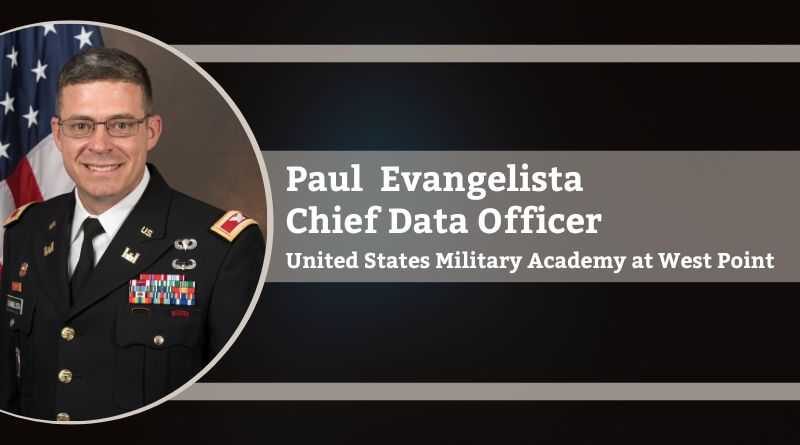Decision Literacy First—Then Data Literacy
By Paul Evangelista, Chief Data Officer, United States Military Academy at West Point
Data is one of the most valued commodities in business today for two reasons. Data accelerates and improves decisions. However, benefits from data can be elusive, especially if the data is not synchronized and connected with the business context that drives decisions.
Good decisions create success. Sounds simple, right? If it was simple, success would be easier to find. Good decision making is hard, requiring deliberate thought and practice. A decision is an irrevocable commitment of resources with irrevocable consequences. Good decision makers are the most valued types of employees and leaders because they understand how to translate valuable resources into favorable consequences.
The path to improved decisions through data requires decision literacy first, then data literacy. Decision literacy involves contextual awareness of the problems and dynamics faced by the business. John Hammond, Ralph Keeney, and Howard Raiffa wrote an accessible and practical book on decision making titled Smart Choices. In Smart Choices, the authors reinforce that the most important aspect of decision making involves keen awareness of the objectives of the decision. Objectives are a wonderful place to start when attempting to build decision literacy. Oftentimes, leaders will not know or be able to articulate a future decision. Decisions are hard to anticipate. Studying business objectives creates one of our best opportunities to anticipate important decisions.
As the topic of data literacy grows across any community, it is important to recognize that data literacy does not imply or require deep technical skills.
Businesses employ strategies to achieve objectives; gaps exist between reality and objectives. These gaps create decision opportunities. How should the strategies change to fill the gap? What resources should be committed? Decision literacy grows from understanding the details of these types of questions. Deep contextual awareness of the problems and gaps faced by businesses is fundamental for decision literacy.
The connection to data builds from here. The most valuable data will connect to a business’s most important problems and gaps. Data literacy starts with data and analytics (D&A) professionals that understand the data and tools available to address these problems and gaps. Business leaders will inherently find interest in the relevant data and tools, especially if these data and tools are described within the context of current business problems and gaps. The data and tools become more compelling when there is a clear opportunity to connect the data and tools with specific business problems and gaps.
Building these connections requires work, thought, and design. All too often, D&A professionals lament the lack of data literacy amongst decision makers. Rarely do D&A professionals recognize that these data literacy shortcomings might emerge as a product of the data community, a system that D&A professionals largely create. Donnella Meadows, a seminal scholar in systems thinking, reinforces this assertion with a simple yet powerful statement: “the system, to a large extent, causes its own behavior!” Through deliberate system design, D&A professionals are more likely to create a favorable data community with desirable system behaviors.
Consider the role of D&A professionals within the people network, culture, and communication related to D&A. This is a system of people who care about data at some level; this system is a data community. With any system, design is critical. D&A professionals are the natural leaders of the data community, which means they are largely responsible for the design of the data community! If decision literacy and deep contextual awareness of the business problems and gaps are not a central component of the narrative in the data community, decision literacy and data literacy will continue to fall short. When business problems and gaps become a central theme of discussion and thought within the data community, decision literacy will grow. With improved decision literacy, the data community will recognize opportunities to address these business problems with the appropriate data and tools. As appropriate data and tools are applied to decisions, data literacy will grow.
As the topic of data literacy grows across any community, it is important to recognize that data literacy does not imply or require deep technical skills. Technical skills help with data literacy, but they are not a prerequisite. Data literacy and technical skills are not interdependent. Having both traits is powerful, but these two traits are different. It does not take technical skill to ask analytical questions, show interest in trends and analytics, and encourage the use of data to support decisions. Someone who is passionate about decision literacy can easily become passionate about data literacy. Interest and thought are the only prerequisites.
I’ll conclude by offering an initiative that may help operationalize decision and data literacy in any organization. This initiative centers on a strategic methodology from the United States Army. The Army War College serves as the custodian of the Army’s Key Strategic Issues List (KSIL), a list of topics that represent concerns and shortcomings across our defense posture. In summary, this list highlights the most important gaps that exist between reality and national security objectives. Development of the KSIL is a deliberate process, discussed and approved by senior Army leadership, and continually improved. Every organization has strategic shortcomings. This means that every organization would benefit from a clearly articulated KSIL. Clear articulation of a KSIL sends an explicit message to your organization: address a problem on the KSIL, and you will help our organization succeed. I cannot think of a better place to find guidance and support for a data strategy. If your data strategy is not clearly linked to the key strategic issues facing your organization, then where is it linked? Furthermore, when you speak the language of the key strategic issues and shortcomings amongst organizational leaders, you speak their language—the language of decisions. It is natural for data and analytics professionals to desire a data literate community. However, if we want others to understand our language, it may be worthwhile to learn their language first.

